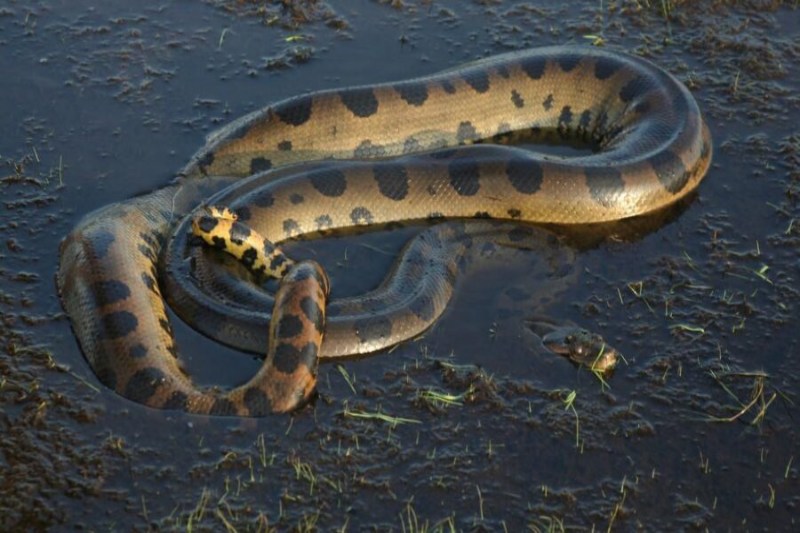Will Smith Docuseries Reveals Discovery of Largest Anaconda Species

A group of researchers from The University of Queensland has successfully captured a gigantic anaconda species that is regarded as the largest in the world, deep within Ecuador’s Amazon.
Under the direction of professor Bryan Fry, the team of scientists discovered the roughly 10-million-year-old species with assistance from the native Huaorani people while recording “Pole to Pole with Will Smith,” a National Geographic series that the Oscar winner hosts and is available for streaming onDisney+.
“The size of these magnificent creatures was incredible,” Fry said in a news release. “One female anaconda we encountered measured an astounding 6.3 meters (20.8 feet) long.”
The Huaorani Chief Penti Baihua extended an invitation to visit the Baihuaeri Huaorani Territory in the Ecuadorian Amazon on Thursday, stating that it was “one of only a handful granted since the tribe’s first contact in 1958.”
“A unique invitation was extended to our team to investigate the area and gather specimens from an anaconda population,” he stated.
The 10-day search for the anacondas, which the tribe regards as sacred, was headed by Chief Baihua and Fry’s crew.
In the Bameno region, the team paddled down the river and saw “several anacondas lurking in the shallows, lying in wait for prey,” according to Fry.
The team subsequently caught multiple examples of the species they had named, the Eunectes akayima, or northern green anaconda.
“The key to understanding the discovery is the difference in the geographic range of anaconda species,” Fry stated.
Two distinct basins make up the Amazon. The green anaconda, which gives rise to the northern green anaconda, lives in the bigger basin in the south, which includes sections of French Guiana, Bolivia, Peru, and Brazil. The recently discovered northern green anaconda lives in the smaller basin in the north, which includes sections of French Guiana, Colombia, Ecuador, Guyana, Suriname, Trinidad, Venezuela, and other countries.
Genetically, the two species differ by 5.5%, according to Fry. “It’s pretty important—to put it in perspective, there is only a 2% difference between humans and chimpanzees.”
Anecdotal stories from the Huaorani people mention other anacondas in the area that are larger than 7.5 meters (24.6 feet) in length and weigh approximately 500 kilograms (1,102 pounds). Additionally, Marcelo Tepeña Baihua, the son of Chief Baihua, has scars from a snake that is roughly that size…
“The scars were clearly from a truly massive snake. They say that one wasn’t even the biggest they’ve ever seen,” Fry said. “So its clear that the snakes in the Huaorani lands are indeed the biggest of all anacondas.”
Information about the discovered snakes may be found in the scientific publication MDPI Diversity.
According to Fry, their team has a lot more work to do in the Amazon. According to Fry, “the delicate fabric of this ecosystem has woven itself with pollutants like cadmium and lead as consequences of the frequent oil spills plaguing the Yasuni Amazon.”
In order to learn more about the overall health of the ecosystem, Fry’s team plans to monitor the northern green anaconda’s reproductive cycle.
“Our future expeditions will focus on the collection and analysis of soil, water, and biological samples, employing cutting-edge techniques to trace the pathways of these contaminants,” Fry said. “By understanding how these metals affect the endocrine systems of the Amazon’s wildlife, we can begin to unravel the long-term consequences of exposure and devise strategies to mitigate these effects.”
Even with its difficulties, Fry said, the trip into the bush was full of “wonder,” despite the uncertain future of this recently found species.
“I like nothing better than being overheated, and under-washed while wading through swamps in search of giant snakes,” Fry stated. “The pinnacle of my career has been this discovery.”